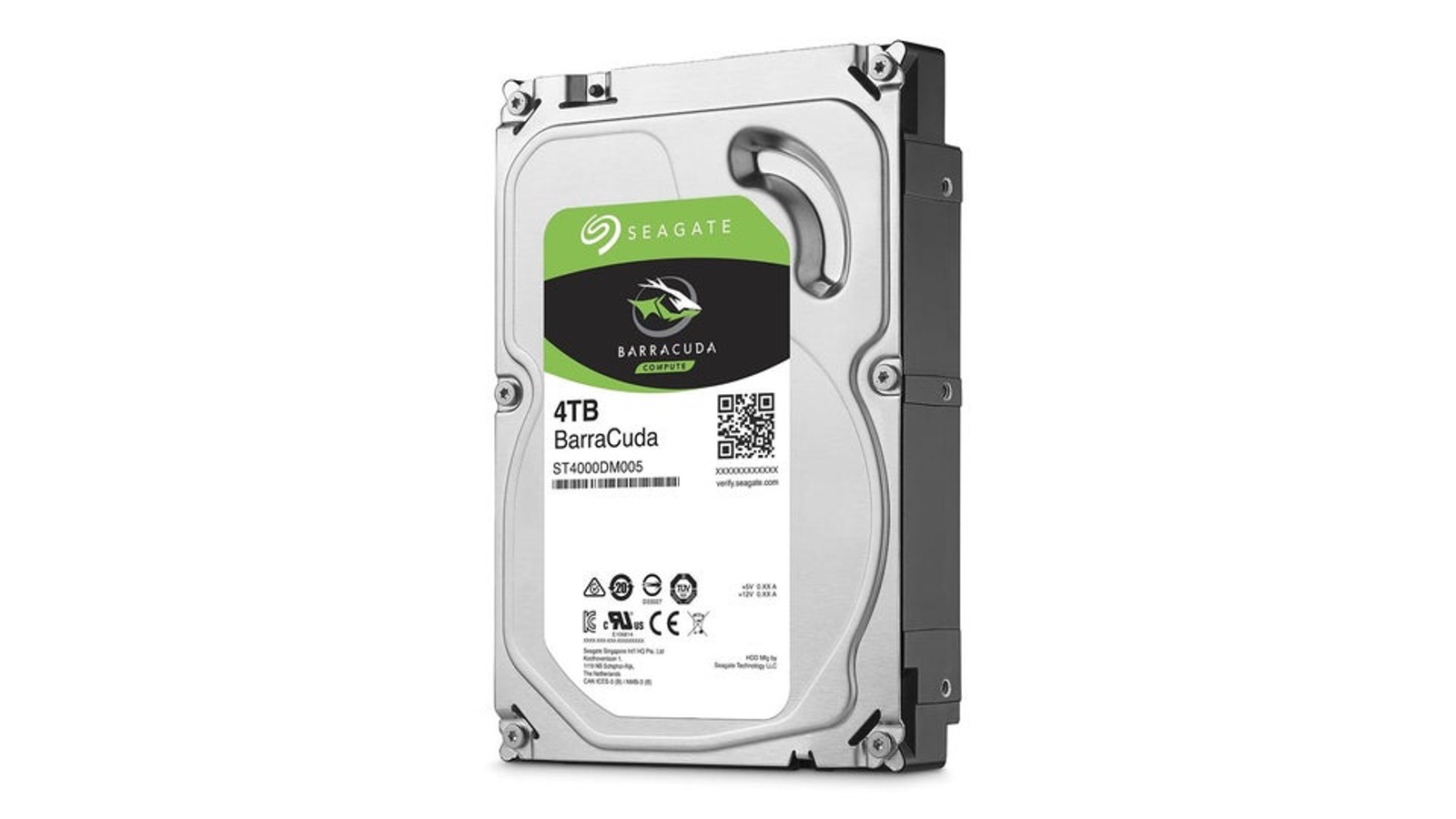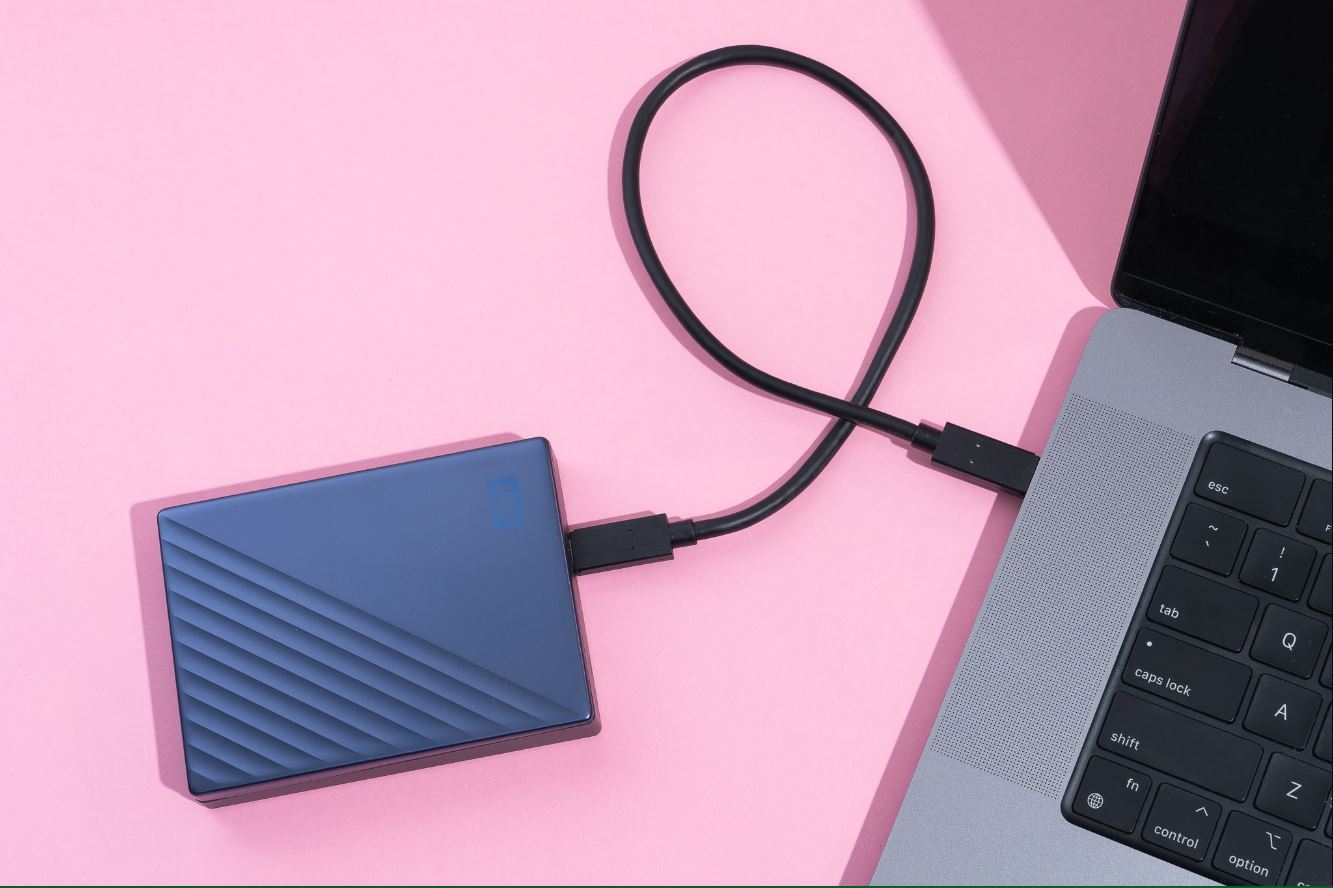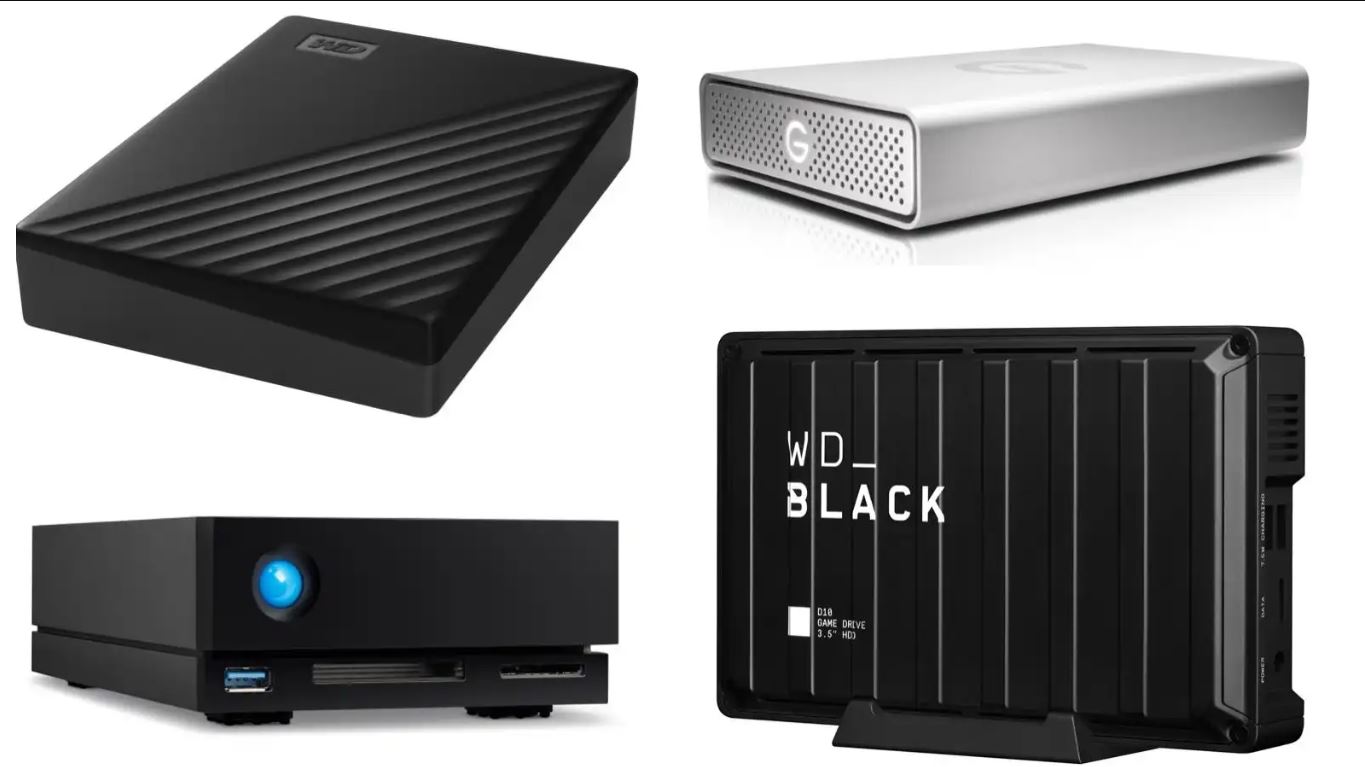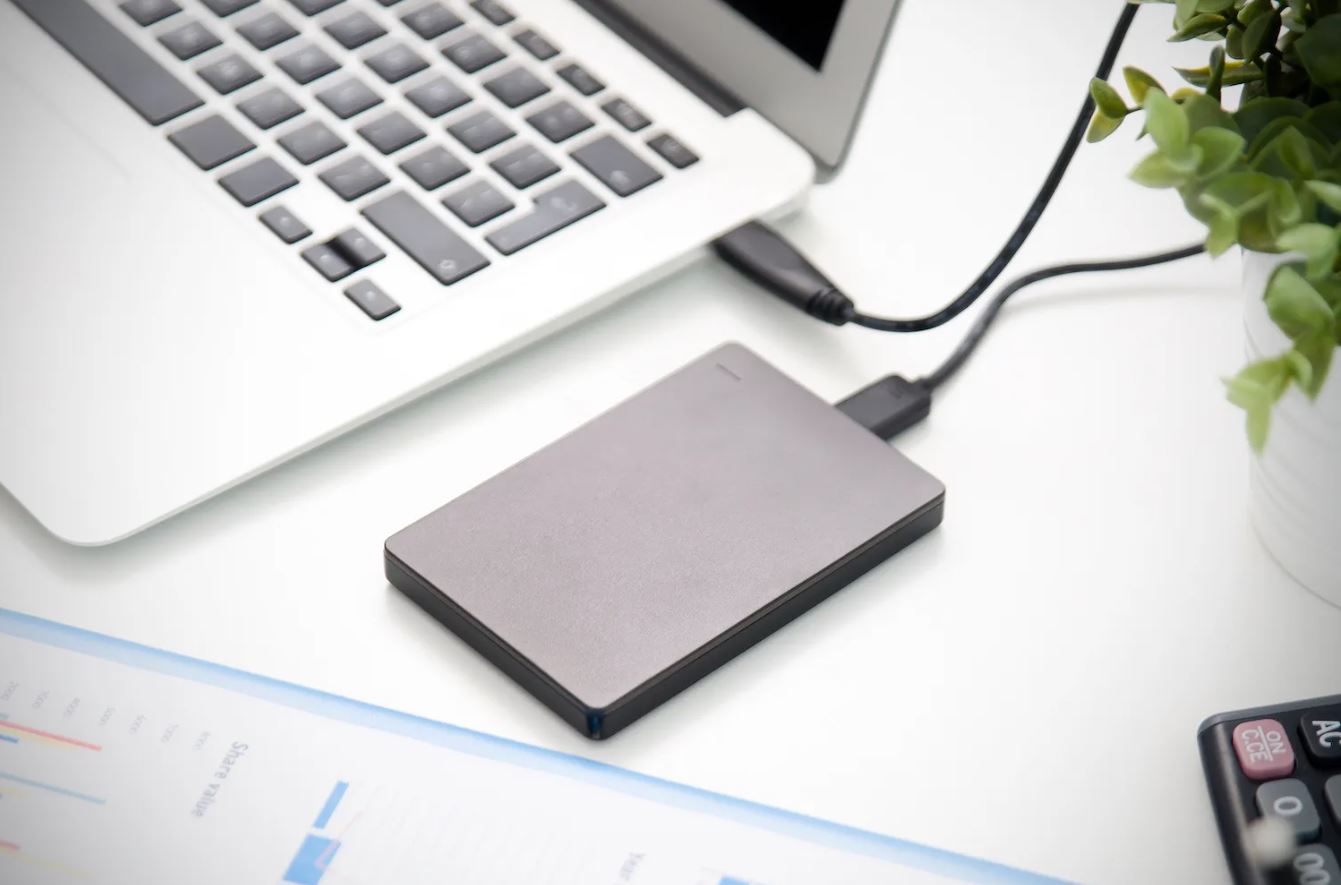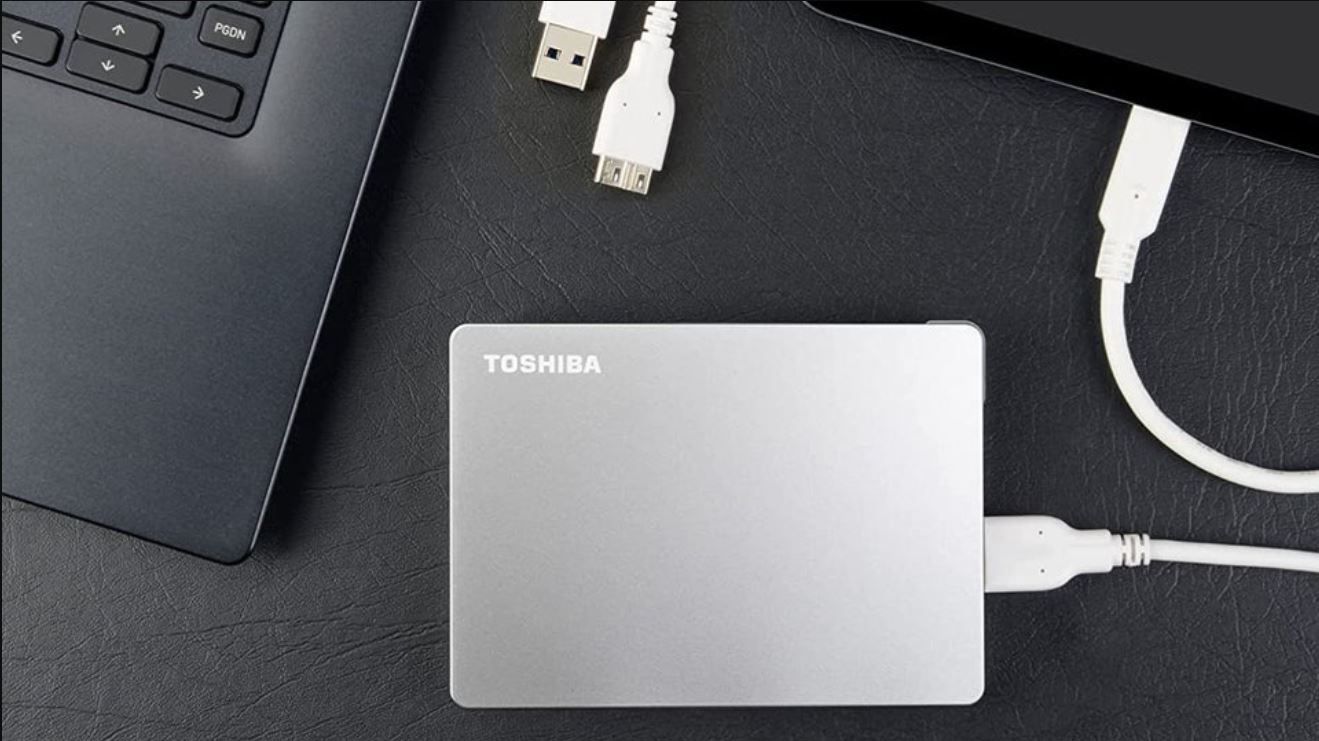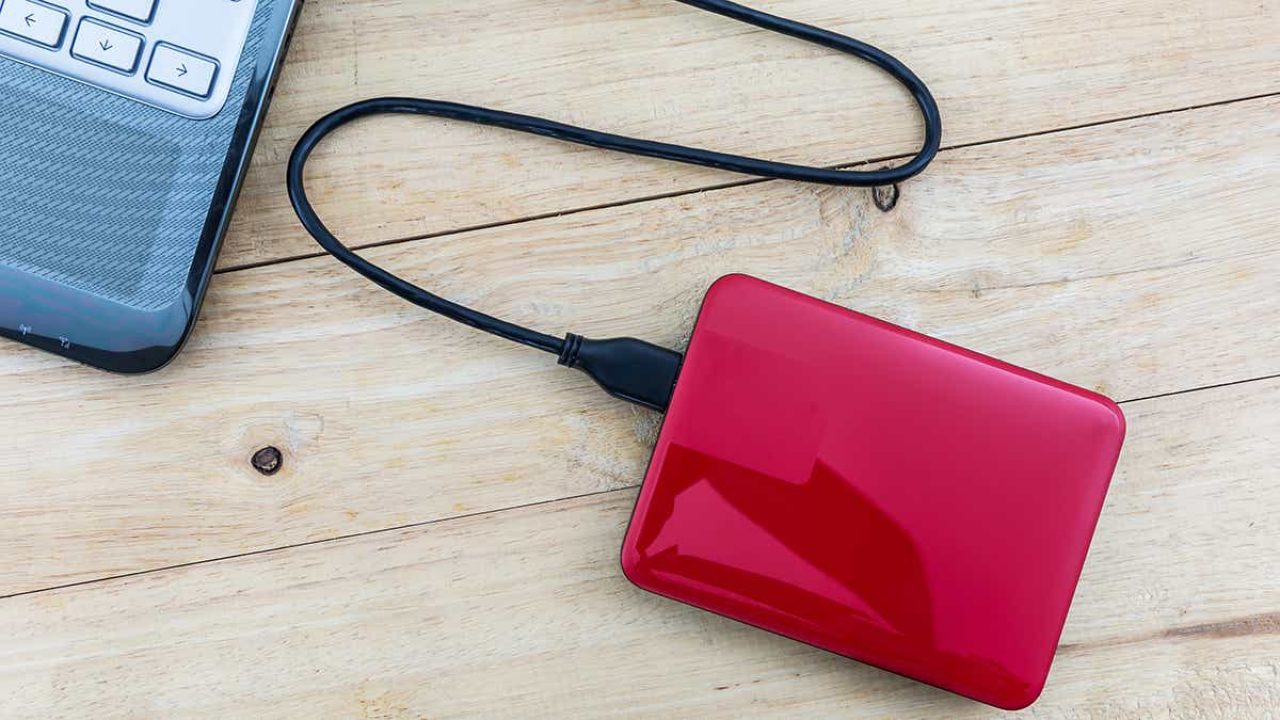Introduction
Backing up your important files and data is crucial in today’s digital age. Whether you’re a student with important assignments, a professional with essential work documents, or a photographer with precious memories captured in photos, the value of your data cannot be overstated. That’s where a Toshiba external hard drive comes in handy.
A Toshiba external hard drive provides you with a secure and reliable storage solution for your valuable files. It allows you to conveniently backup your data, ensuring that it remains safe and protected from potential hardware failures, accidental deletions, or other unforeseen events.
In this article, we will guide you through the process of backing up your files on a Toshiba external hard drive. We will explore various options and software tools that you can use to make the backup process easier and more efficient.
By following the steps outlined in this guide, you will be able to safeguard your important files and have peace of mind knowing that your data is protected and can be easily restored if needed.
So, whether you’re a beginner looking to backup your files for the first time or a seasoned computer user, this article is designed to help you navigate the process of backing up on a Toshiba external hard drive.
Why is Backing Up Important?
Backing up your data is one of the most crucial steps you can take to protect your valuable files. Here are a few reasons why backing up is essential:
- Protection Against Data Loss: Hardware failures, accidental deletions, and malware attacks are unfortunate events that can lead to data loss. By regularly backing up your files, you can protect yourself against the risk of losing important data.
- Recovery from Accidental Deletions: We’ve all experienced that sinking feeling when we accidentally delete a file. Having a backup ensures that you can easily restore the deleted file without any hassle.
- Security Against Malware and Ransomware: With the rise of cyber threats, protecting your data from malware and ransomware attacks is crucial. Regularly backing up your files allows you to recover your data and avoid paying ransom in case of an unfortunate attack.
- Disaster Recovery: Natural disasters, such as fires, floods, or earthquakes, can damage or destroy your computer and external hard drive. By having an off-site backup, you can ensure that your files are safe and can be accessed even in the event of a physical disaster.
- Preserving Precious Memories: Photos and videos capture our cherished memories. Losing them due to a data loss can be heartbreaking. By regularly backing up your media files, you can preserve those precious memories and ensure they are safe from accidental loss.
Remember, data loss can happen at any time, often when we least expect it. By making backup a routine part of your digital habits, you can minimize the impact of data loss and have a reliable copy of your files at all times.
How to Connect Toshiba External Hard Drive to Your Computer
Before you can start backing up your files, you need to make sure that your Toshiba external hard drive is properly connected to your computer. Here’s how you can do it:
- Check the Interface: Determine the type of interface your Toshiba external hard drive uses. It can be USB, Thunderbolt, or eSATA. This information is usually specified in the product documentation or on the drive itself.
- Connect the Cable: Use the appropriate cable to connect your Toshiba external hard drive to your computer. For most models, a USB cable is commonly used. Plug one end of the cable into the external hard drive and the other end into an available USB port on your computer.
- Power On the Drive: Some Toshiba external hard drives require external power, while others are powered directly through the USB connection. If your drive requires external power, connect it to a power source using the provided power adapter.
- Wait for Recognition: Once connected, your computer should automatically recognize the Toshiba external hard drive. In some cases, you may need to wait a few seconds for the drive to initialize.
- Ensure Drive Visibility: Open the File Explorer on Windows or Finder on macOS to check if the Toshiba external hard drive is visible in the list of connected devices. It should be listed as a new storage device.
Once you have successfully connected your Toshiba external hard drive to your computer, you are ready to proceed with the backup process. In the next sections, we will explore different backup options and software tools to help you easily and efficiently back up your files.
Choosing the Right Backup Software
When it comes to backing up your files, having the right backup software can greatly simplify the process and ensure that your data is protected. Here are some factors to consider when choosing the right backup software for your Toshiba external hard drive:
- Compatibility: Ensure that the backup software you choose is compatible with your operating system (Windows, macOS, Linux, etc.) and the specific model of your Toshiba external hard drive. Check the software’s system requirements and compatibility information before making a decision.
- Features: Look for backup software that provides the features you need. This may include options for full system backups, incremental backups, scheduling, encryption, and the ability to backup specific files and folders.
- User-Friendliness: Consider how easy the software is to use. Look for a backup software with an intuitive user interface and simple setup process. This will make it easier for you to navigate and ensure that you can effectively set up and manage your backups.
- Reliability: Look for backup software that is known for its reliability and stability. Online reviews and recommendations from trusted sources can help you gauge the reliability of different software options.
- Customer Support: In case you encounter any issues or have questions, it’s important to have access to reliable customer support. Check if the backup software offers customer support through email, live chat, or phone, and consider the quality and responsiveness of their support team.
Keep in mind that there are both free and paid backup software options available. Free software can often provide basic backup functionality, but paid software may offer more advanced features and support. Consider your budget and the level of features and support you require when making your decision.
Ultimately, the right backup software for you will depend on your specific needs and preferences. Take the time to research different options, compare their features and reviews, and choose the software that best fits your requirements.
Option 1: Using Toshiba’s Backup Software
If you have a Toshiba external hard drive, one convenient option is to use the backup software provided by Toshiba. Many Toshiba external hard drives come with pre-installed backup software specifically designed for their drives. Here’s how you can use Toshiba’s backup software:
- Install the Software: Connect your Toshiba external hard drive to your computer and follow the instructions provided to install the Toshiba backup software. This software is usually included on a CD or can be downloaded from the Toshiba support website.
- Launch the Software: Once the installation is complete, launch the Toshiba backup software. It will typically have a recognizable icon on your desktop or be accessible through the Start menu.
- Set Up Backup Options: Follow the prompts to configure your backup options. This may include selecting the files and folders you want to back up, choosing a backup schedule, and setting up any encryption or compression options.
- Start the Backup: Once you have configured your backup settings, start the backup process. The Toshiba backup software will begin copying your selected files and folders to the Toshiba external hard drive.
- Monitor the Backup Progress: During the backup process, you can monitor the progress in the Toshiba backup software. It will typically display the estimated time remaining and the current status of the backup.
- Verify the Backup: Once the backup is complete, it is always a good practice to verify that the files have been successfully backed up to the Toshiba external hard drive. Double-check that your important files are present and accessible.
Toshiba’s backup software provides a straightforward and convenient solution for backing up your files. It is specifically designed to work seamlessly with Toshiba external hard drives, ensuring compatibility and reliable performance.
Using Toshiba’s backup software can be an excellent choice if you prefer a hassle-free and manufacturer-supported backup solution. However, if you prefer more customization options or if you don’t have access to Toshiba’s software, there are other backup options available, which we will explore in the upcoming sections.
Option 2: Using Built-in Backup Tools in Windows
If you’re using a Windows computer, you have the advantage of built-in backup tools that can help you easily back up your files to your Toshiba external hard drive. Windows offers two primary backup tools: File History and Backup and Restore. Here’s how you can use these built-in tools:
- File History: File History is available in Windows 8 and Windows 10. It allows you to automatically back up your files to an external hard drive. To set up File History, follow these steps:
- Connect your Toshiba external hard drive to your computer.
- Go to the “Settings” menu and select “Update & Security.”
- Choose “Backup” from the left-hand side menu.
- Click on “Add a drive” and select your Toshiba external hard drive.
- Turn on the “Automatically back up my files” option.
- Adjust the backup frequency and other settings according to your preferences.
- File History will now regularly back up your files to the Toshiba external hard drive.
- Backup and Restore: Backup and Restore is available in Windows 7. While Windows 7 doesn’t have the File History feature, you can still use Backup and Restore to create regular backups. Here are the steps:
- Connect your Toshiba external hard drive to your computer.
- Go to the Windows Start menu and search for “Backup and Restore.”
- Open the Backup and Restore tool and click on “Set up backup.”
- Choose your Toshiba external hard drive as the backup destination.
- Select the files and folders you want to back up.
- Configure the backup schedule and other settings as desired.
- Click “Save settings and run backup” to initiate the backup process.
Using the built-in backup tools in Windows allows you to easily back up your files without the need for third-party software. It provides a convenient and integrated solution for protecting your data on a Toshiba external hard drive. However, if you require more advanced features or have specific backup preferences, you may want to consider using third-party backup software, which we will discuss in the next section.
Option 3: Using Third-Party Backup Software
If you prefer more advanced features and customization options for backing up your files to your Toshiba external hard drive, using third-party backup software is a great option. There are various reputable third-party backup software available. Here’s how you can use them:
- Research and Choose a Software: Take the time to research and compare different third-party backup software options. Look for software that offers the features you need, such as flexible scheduling, encryption, incremental backups, and easy file recovery.
- Download and Install: Once you’ve chosen a third-party backup software, download it from the official website. Follow the installation instructions provided by the software vendor to install it on your computer.
- Connect Your Toshiba External Hard Drive: Ensure that your Toshiba external hard drive is connected and recognized by your computer. The software should detect the external drive as a backup destination option.
- Configure Backup Settings: Open the backup software and configure the backup settings according to your preferences. This may include selecting the files and folders you want to back up, choosing a backup schedule, and setting any encryption or compression options.
- Initiate the Backup: Once you’ve configured the backup settings, start the backup process. The software will begin transferring your selected files and folders to the Toshiba external hard drive.
- Monitor the Backup Progress: While the backup is in progress, you can monitor the progress within the backup software. It will typically provide information on the files being backed up, estimated time remaining, and the overall progress.
- Verify and Test the Backup: After the backup is complete, it is essential to verify that the files have been successfully backed up to the Toshiba external hard drive. Test the restoration process by selectively restoring a few files or folders to ensure everything is working correctly.
Using third-party backup software gives you more control over the backup process and advanced features to suit your specific needs. It offers a comprehensive and customizable solution for efficiently backing up your files to your Toshiba external hard drive.
Make sure to follow the instructions provided by the backup software vendor and utilize any support documentation or resources they offer to maximize the effectiveness of the software and ensure the safety of your files.
Configuring Your Backup Preferences
Configuring your backup preferences is an important step in ensuring that your files are backed up effectively and efficiently. Here are some key factors to consider when fine-tuning your backup preferences:
- Backup Frequency: Decide how often you want your files to be backed up. You can choose daily, weekly, or monthly backups, depending on the frequency of your file changes and the importance of your data.
- Backup Method: Consider the backup method that best suits your needs. Options include full backups (creating a complete copy of all selected files and folders), incremental backups (only backing up files that have changed since the last backup), or differential backups (backing up all changes since the last full backup).
- Compression and Encryption: Decide if you want to enable compression and encryption for your backups. Compression reduces the size of the backup files, saving storage space, while encryption adds an extra layer of security to protect your data from unauthorized access.
- Retaining Old Versions: Determine how many previous versions of files you want to retain. This allows you to restore earlier versions of files in case of accidental changes or deletions.
- Backup Destination: Specify the location where you want the backups to be stored. This should be set to your Toshiba external hard drive to ensure that your files are stored securely and separately from your computer’s internal storage.
- Custom Folder Selection: Take the time to choose specific files and folders that you want to include in the backup. This helps you avoid backing up unnecessary files and saves storage space.
- Notifications and Alerts: Decide if you want to receive notifications and alerts about the backup process. This can help you keep track of the backup status and any potential issues that may arise.
By configuring your backup preferences to align with your specific requirements, you can optimize the backup process and ensure that your important files are protected. Regularly review and update your backup preferences as needed to adapt to changes in your data and usage patterns.
Remember, the backup preferences may vary depending on the backup software or built-in tools you are using. Consult the documentation or user guide provided by the software vendor for specific instructions on configuring your backup preferences.
Selecting the Files and Folders to Backup
When it comes to backing up your files, it’s important to carefully select the specific files and folders that you want to include in your backup. Here are some guidelines to help you choose the right files and folders:
- Identify Critical Data: Begin by identifying the files and folders that contain your most critical data. This includes documents, spreadsheets, presentations, and other work-related files that are essential for your business or personal use.
- Consider Personal Files: Don’t forget about your personal files, such as photos, videos, and music. These files often hold sentimental value and can be irreplaceable, making them essential candidates for backup.
- Audit Applications: Review the applications you use and identify files and folders associated with them that you may want to include in the backup. For example, if you use email clients or productivity software, include the folders where those applications store their data.
- Include User Profiles: If you have multiple user profiles on your computer or if you’re backing up files from multiple computers, ensure that you include the files and folders specific to each user profile for a comprehensive backup.
- Exclude Temporary Files: Exclude temporary files and cache folders from your backup. These files are not critical and can take up unnecessary storage space. Focus on backing up files that you can’t easily retrieve or replace.
- Use Folder Structures: Consider the folder structure of your files and ensure that you include the necessary parent folders that contain relevant subfolders and files. This helps maintain the organizational structure when restoring files from the backup.
- Review File Types: Take into account the types of files you work with the most and prioritize their inclusion in the backup. This could range from documents and spreadsheets to design files or programming code.
By selectively choosing the files and folders to include in your backup, you can optimize storage space on your Toshiba external hard drive and ensure that you have copies of your most critical and irreplaceable data. Regularly review and update your selection as your data needs change over time.
Remember, the process of selecting files and folders may vary depending on the backup software or built-in tools you are using. Refer to the documentation or user guide provided by the software vendor for specific instructions on selecting files and folders for backup.
Scheduling Regular Backups
Scheduling regular backups is essential to ensure that your files are continuously protected and updated on your Toshiba external hard drive. By setting up a backup schedule, you can automate the backup process and eliminate the risk of forgetting to manually perform backups. Here’s how you can schedule regular backups:
- Determine Backup Frequency: Decide how often you want your backups to run. The frequency will depend on factors such as the amount of data you generate or modify regularly and the importance of the files. Options include daily, weekly, or monthly backups.
- Choose a Time: Select a specific time when your computer is likely to be on and available for the backup process. This can be during non-working hours or when you’re not actively using your computer to minimize interruptions.
- Configure the Backup Schedule: Access the backup software or built-in tools you’re using and navigate to the settings or preferences to set up the backup schedule. Specify the desired frequency and time for the backups to occur.
- Consider Idle Time: Some backup software offers the option to run backups during periods of computer idle time. This ensures that the backup process doesn’t interfere with your workflow and utilizes system resources more efficiently.
- Allow for Flexibility: Balance your backup schedule with flexibility. Consider adjusting the frequency or time of backups during periods when you anticipate a high volume of data changes or increased usage. This allows you to ensure that recent updates are included in the backup.
- Monitor Backup Success: Regularly monitor the backup logs or notifications to ensure that the scheduled backups are running successfully. Be alert to any errors or issues that may prevent backups from occurring and address them promptly.
By scheduling regular backups, you create a proactive approach to data protection. It ensures that your files are continuously backed up and provides peace of mind, knowing that your valuable data is securely stored on your Toshiba external hard drive.
Remember to periodically review and update your backup schedule to align with any changes in your data usage or workflow. Adjust the frequency or time as needed to maintain an effective backup routine.
Depending on the backup software or built-in tools you’re using, the process of scheduling regular backups may vary. Consult the documentation or user guide provided by the software vendor for specific instructions on configuring backup schedules.
Restoring Files from Your Toshiba External Hard Drive
Knowing how to restore files from your Toshiba external hard drive is just as crucial as backing them up. In the event of accidental file deletion, hardware failure, or data corruption, you can utilize the backup copies stored on your Toshiba external hard drive to recover your files. Here’s how you can restore files:
- Connect Your Toshiba External Hard Drive: Ensure that your Toshiba external hard drive is connected to your computer. Make sure it is recognized by the operating system and accessible in the file explorer or finder.
- Locate the Files to Restore: Navigate to the folder or location on your Toshiba external hard drive where the backed-up files are stored. This could be organized by date, file type, or specific backup sets you’ve created.
- Select Files for Restoration: Identify the files or folders you want to restore and select them. You can choose individual files or entire folders depending on your needs.
- Copy or Move Files: Depending on your preference, you can either copy the selected files to your computer or directly move them from the Toshiba external hard drive to the desired location on your computer’s storage. Be careful not to overwrite any existing files.
- Verify Restored Files: Once the restoration process is complete, verify that the files have been successfully restored. Open the restored files to ensure they are accessible and in their original state.
- Reorganize Restored Files: If necessary, reorganize the restored files within your computer’s file system to match their original location or folder structure. This will help maintain organization and ease of access.
It’s important to note that the process for restoring files may vary depending on the backup software or built-in tools you’ve used for the backups. Refer to the specific instructions provided by the software vendor or documentation for guidance on restoring files and folders.
Having an understanding of the file restoration process gives you the confidence and ability to recover your important files when needed. Regularly test the restoration process so that you are well-prepared in the event of data loss or system failure.
Troubleshooting Common Backup Issues
While backing up your files is essential for data protection, occasional issues may arise that hinder the backup process. Here are some common backup issues and troubleshooting steps to help address them:
- Connection Problems: If your Toshiba external hard drive is not recognized by your computer, try connecting it to a different USB port or using a different USB cable. Ensure that the drive is powered on and properly connected. Test the connection with other devices if possible to narrow down the issue.
- Insufficient Storage Space: If you receive an error indicating insufficient storage space on your Toshiba external hard drive, consider freeing up space by deleting unnecessary files or transferring them to another storage location. Alternatively, consider upgrading to a larger capacity external hard drive.
- Data Corruption: In case of data corruption on your Toshiba external hard drive, run a disk check utility to scan and repair any errors. This can help restore the drive’s functionality and preserve the integrity of your backup files.
- Software Incompatibility: If you experience issues with the backup software, ensure that it is compatible with your operating system and the specific model of your Toshiba external hard drive. Check for software updates or consider using alternative backup software that is compatible with your setup.
- Slow Backup Speed: If the backup process is slow, check if other resource-intensive applications or processes are running on your computer. Close unnecessary programs to free up system resources and improve backup speed. Additionally, ensure that the USB port you are using is a high-speed port for optimal transfer speeds.
- Backup Interruptions: If the backup process is frequently interrupted or fails to complete, check for any background tasks or system settings that may interfere with the backup process. Configure your computer’s power settings to prevent it from going into sleep or hibernation mode during backups.
- File Exclusions: If certain files or folders are not being included in the backup, review the backup settings to ensure that they are not excluded or overlooked. Check for any specific file type or folder exclusions specified in the backup software or built-in tools.
- Error Messages: Pay attention to any error messages that may appear during the backup process. Note down the error message or code and search online for possible solutions. The backup software vendor’s support documentation or forums can also provide valuable troubleshooting guidance.
If you encounter persistent backup issues that you are unable to resolve, consider reaching out to the backup software vendor’s customer support for further assistance. They can provide specific troubleshooting steps and guidance to help resolve the problem.
Regularly troubleshooting common backup issues and staying proactive in resolving them ensures a smooth and reliable backup process, guaranteeing the safety and accessibility of your valuable files.
Conclusion
Backing up your files to a Toshiba external hard drive is a crucial step in protecting your valuable data from loss, corruption, or accidental deletion. By following the steps outlined in this guide, you can ensure that your files are safely stored and easily recoverable when needed.
We began by understanding the importance of backing up and the potential risks associated with not having a backup in place. We then explored different options for connecting your Toshiba external hard drive to your computer, including using Toshiba’s backup software, built-in backup tools in Windows, or opting for third-party backup software.
We discussed the significance of configuring backup preferences such as backup frequency, compression, and encryption options, as well as selecting the specific files and folders to include in your backups. Scheduling regular backups allows for automated and consistent protection of your files without requiring manual intervention.
Furthermore, we covered the process of restoring files from your Toshiba external hard drive, ensuring that you can recover your valuable data in the event of data loss or corruption. We also addressed common backup issues and offered troubleshooting tips to help overcome any obstacles that may arise during the backup process.
Remember to review and update your backup preferences and schedule periodically to adapt to changing data needs. Regularly test the restoration process to ensure its functionality and verify that your files are being properly backed up.
By implementing a robust backup strategy and utilizing your Toshiba external hard drive as a reliable storage solution, you can have peace of mind knowing that your important files are secure and protected from unexpected events.










